Before sleek designs and whisper-quiet operation became selling points, ’70s household tools were built like tanks and sounded like construction sites. These workhorses weren’t concerned with aesthetics or decibel levels—they were designed to last decades and announce their presence with authority. Each mechanical roar from the kitchen or workshop was a testament to American engineering: substantial, sometimes excessive, but undeniably effective. Here’s our nostalgic tribute to the reliable beasts that powered our homes before “ergonomic” and “energy-efficient” entered the marketing vocabulary.
1. The Electric Can Opener Wall Mount
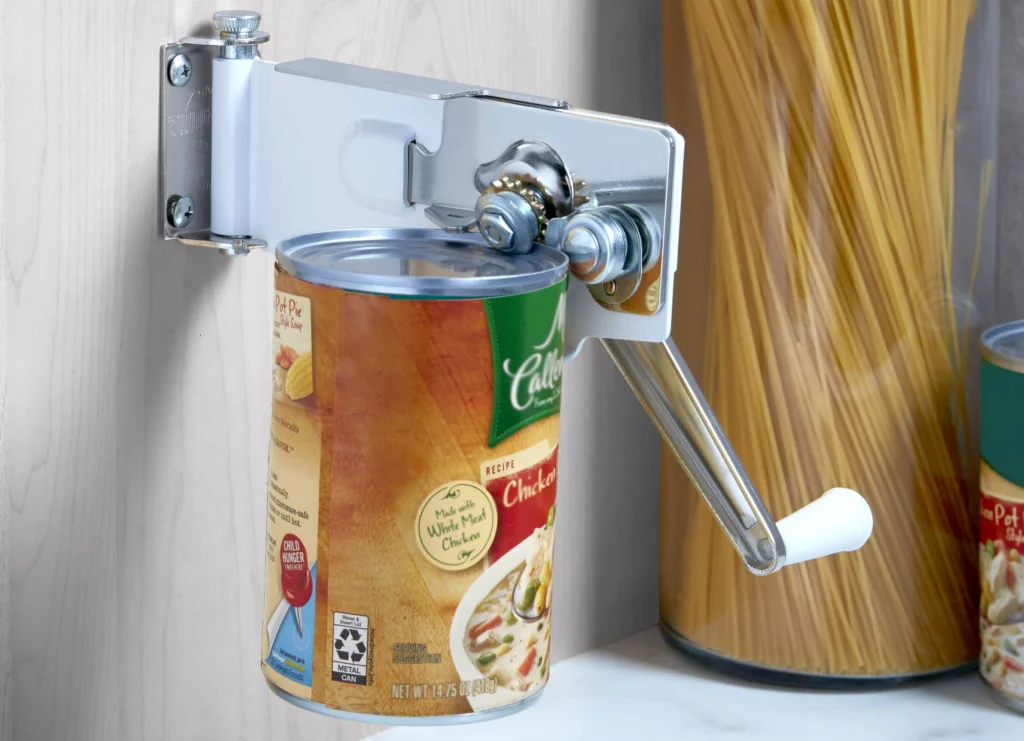
The cornerstone of any ’70s kitchen was that beige or avocado-colored electric can opener permanently bolted to the underside of your cabinet. When activated, it produced a distinctive grinding mechanical roar that could be heard throughout the house, announcing dinner preparations were underway. The hefty metal gears would chew through can lids with ruthless efficiency, occasionally leaving those dangerously sharp edges that became a rite of passage for learning kitchen safety. Back Then History recounts the evolution of the can opener.
Every family had at least one harrowing story of a tuna can mishap or the time it mysteriously started running in the middle of the night, startling everyone awake. Despite weighing approximately ten pounds and requiring actual household construction to install, these trusty machines outlasted marriages and often worked flawlessly for decades without maintenance. When they finally failed, removing them required tools, patience, and usually left mysterious holes in the counter that were never properly addressed.
2. The Metal Hand Mixer with Two Speeds: Fast and Faster
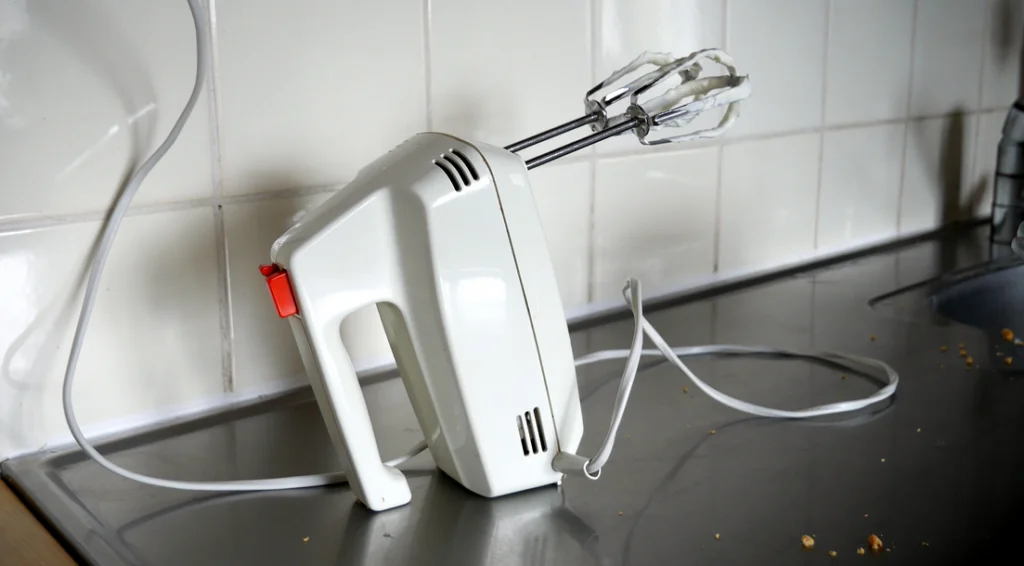
Before variable speed controls and ergonomic designs, hand mixers were essentially industrial motors attached to metal beaters with two operational modes: “powerful” and “hold on for dear life.” The substantial weight required genuine forearm strength, making baking a legitimate workout that left your dominant arm noticeably more developed. These mixers announced their operation to the entire neighborhood, their high-pitched mechanical whine cutting through walls and windows like they were made of paper. Timetoast Timeline Maker digs into the fascinating history of this most handy of kitchen tools.
The beaters, always slightly misaligned, created rhythmic beating patterns against metal mixing bowls that served as percussion for countless kitchen symphonies. When you needed to scrape the sides of the bowl, turning it off created that distinctive “winding down” sound as the motor decelerated from jet engine to complete stop over several long seconds. Despite their heft and ear-piercing volume, these mixers survived being dropped, splattered with cake batter, and subjected to mixtures so thick they would burn out today’s models—emerging from each battle ready for the next baking challenge.
3. The Dial Telephone with Actual Bells
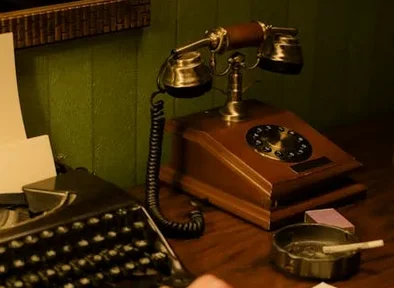
The household telephone was constructed like a weapon, with enough heft that it could double as a self-defense tool in emergencies. That satisfying rotary dial mechanism made a distinctive ratcheting sound as your finger returned from each number, creating a mechanical symphony that today’s children would find utterly foreign. The actual ring wasn’t a digitized approximation but real metal bells that vibrated inside the housing, producing an urgent clanging that could wake the dead and be heard from the backyard. A recounting of the telephone’s evolution on History puts into perspective just how long a journey this household staple has been on.
Miss a number while dialing? Start the entire process over again, listening to each satisfying click as the rotary dial returned home. The coiled cord, perpetually tangled, could stretch remarkably far while still anchoring you to the wall where the phone maintained its permanent residence. Despite being dropped, yanked, and slammed down during angry conversations, these communication tanks continued working through power outages, storms, and family drama—outlasting their owners’ patience with rotary technology.
4. The Metal Office Typewriter
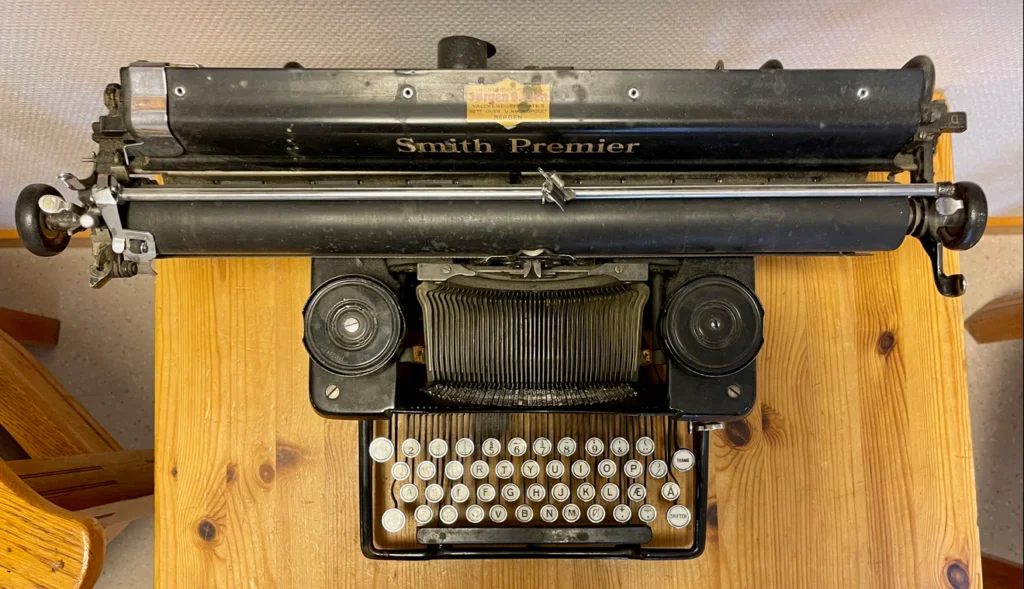
Office typewriters weren’t just tools—they were furniture, weighing enough to require two people to move and commanding desk real estate like battleships. Each keystroke required significant finger strength, creating that iconic mechanical clacking that defined the office soundtrack for decades. The satisfying “ding” at the end of each line and the manual carriage return became so ingrained in users that some typists continued making these sounds when transitioning to early word processors.
The ribbon changing process was a complex operation that inevitably resulted in ink-stained fingers and occasionally ruined clothing. Despite their mechanical complexity—or perhaps because of it—these machines continued functioning through daily abuse, coffee spills, and the occasional desk-clearing tantrum. The substantial metal housing contained hundreds of moving parts working in precise harmony, creating a mechanical marvel that required zero electricity while producing documents with a distinctive character and authenticity that digital text has never quite replicated.
5. The Polaroid Instant Camera
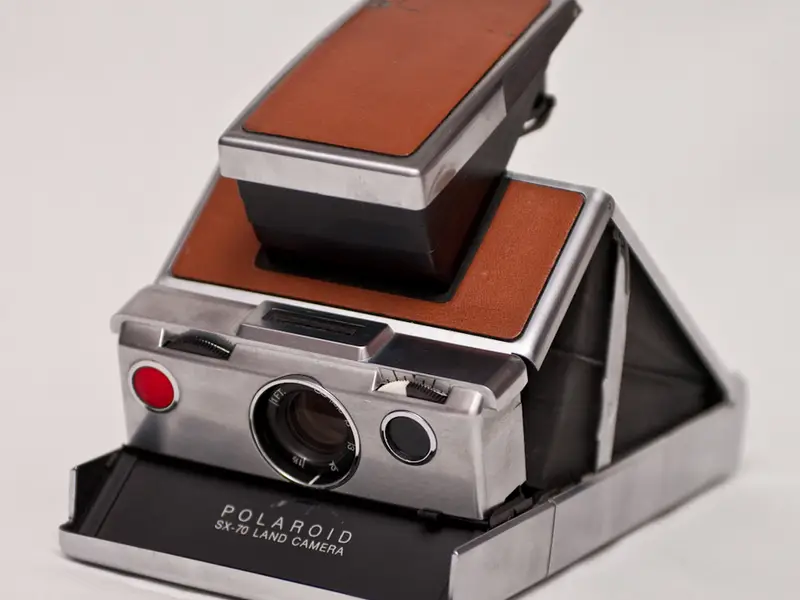
Before digital photography, the Polaroid camera provided immediate gratification with mechanical sounds so distinctive they’ve become iconic. Pressing the red button triggered a complex sequence of whirrs, clicks, and mechanical ejection sounds as the camera spat out a gray rectangle that would slowly, magically reveal your image. The camera itself had substantial heft, with hard edges that left imprints on your face if you weren’t careful about your shooting stance.
Each photo cost actual money—a concept foreign to today’s digital shooters—creating genuine pressure to “make it count” with each expensive exposure. The development process became a social moment, everyone gathered around watching and listening as the chemical magic happened before their eyes, accompaniment to the subtle crackling sound of the development chemicals activating. Despite being dropped at countless birthday parties and family gatherings, these sturdy devices continued working, preserving memories with their distinctive square white-bordered prints that now define the aesthetic of an entire era.
6. The Lawn Mower That Didn’t Stop for Anything
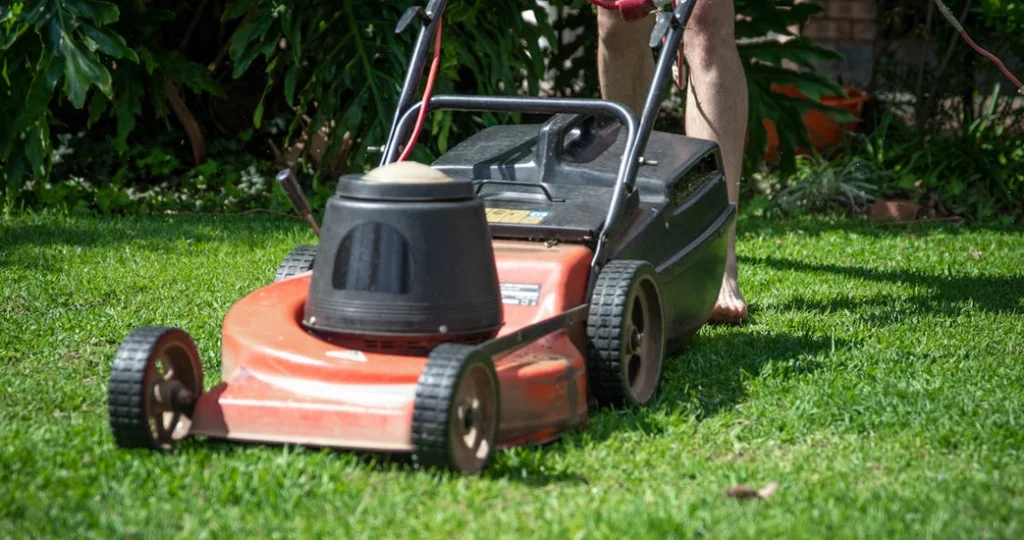
The ’70s push mower announced yard work to the entire neighborhood with a roar that modern, comparatively timid machines can’t match. Starting these beasts required a complex ritual of priming, choking, and yanking the cord with enough force to potentially dislocate your shoulder. Once running, they possessed enough raw power to tackle grass that had grown to jungle-like proportions, along with small trees, toys, and occasionally, unfortunately positioned garden hoses.
These mechanical beasts featured exactly zero safety features by today’s standards—no automatic shutoffs, blade guards, or concern for the operator’s wellbeing. The handle vibrated with such intensity that your hands would remain numb long after you’d finished the lawn, a physical reminder of your accomplishment. Despite being left outside through harsh winters, rarely changing the oil, and ingesting objects that would destroy today’s machines, these mowers kept running season after season, their gradually deteriorating condition only adding character without affecting performance.
7. The Metal Alarm Clock with Actual Bells

Before gentle wake-up lights and customizable ringtones, the bedside alarm clock was an instrument of auditory assault featuring actual metal bells hammered by mechanical arms. The distinctive ticking sound provided nighttime accompaniment that either lulled you to sleep or drove you slowly mad, depending on your disposition. Winding these timepieces was a nightly ritual, the spring-loaded mechanism requiring just the right touch to maintain accurate timekeeping through till morning.
Setting the alarm involved a separate mechanical system, and the moment of truth—that ear-splitting ring when morning arrived—could startle you so thoroughly that you’d occasionally wake up already standing beside the bed. The snooze function, if available at all, was purely mechanical, buying you precious extra minutes before the metal hammers resumed their morning percussion. Despite being knocked off nightstands, stepped on, and subjected to violent early-morning fumbling, these sturdy timekeepers continued their reliable mechanical march, indifferent to your sleep needs or desire for gentle awakening.
8. The Stand Mixer Built Like Industrial Equipment
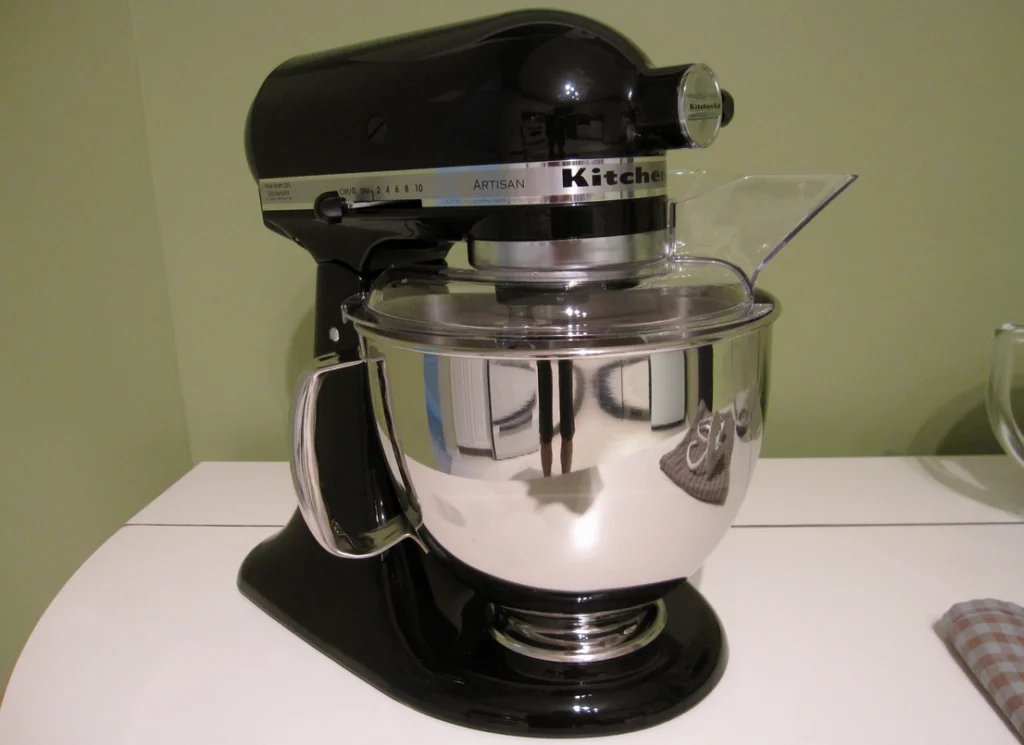
The kitchen stand mixer wasn’t just an appliance—it was a countertop monument weighing approximately the same as a small child. Available in fashion-forward colors like Harvest Gold and Avocado Green, these machines announced their operation to the entire household with a powerful mechanical hum that could drown out conversation. The substantial metal construction meant they could handle everything from bread dough to meatloaf without complaint, the motor barely registering what would leave modern mixers smoking.
The attachments—meat grinders, pasta makers, and sausage stuffers—transformed these already imposing machines into small-scale food processing factories. Families passed these mixers down through generations, the occasional chip in the enamel or mysterious rattle only adding to their character and conversation value. Despite being splattered with every ingredient imaginable and occasionally overloaded beyond reason, these mechanical workhorses kept turning, their distinctive whirring sound becoming the backdrop for holiday preparations and weekly baking sessions across America.
9. The Blender That Threatened to Take Flight
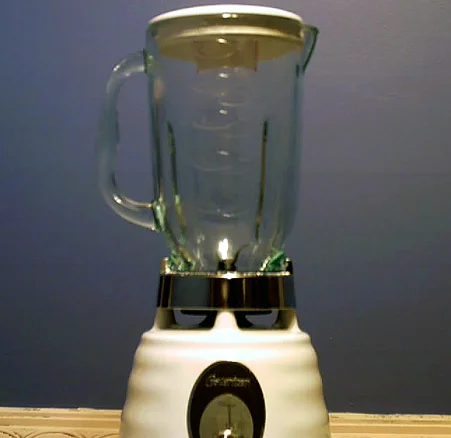
The family blender operated at one speed—dangerously fast—with a motor sound closely resembling a small aircraft preparing for takeoff. The glass container sat precariously on a heavy metal base that vibrated across the counter during operation, requiring one hand to stabilize while the other maintained a death grip on the lid. Every family had at least one story about forgetting this critical lid-holding step, resulting in kitchen ceilings decorated with smoothie or milkshake remnants.
The control panel featured a row of mysterious buttons with labels like “liquefy” and “pulverize” that all seemed to produce identical jet-engine results regardless of which one you pressed. Despite being dropped, overfilled, and used to blend items so inappropriate they would void modern warranties instantly, these kitchen warriors continued functioning through decades of abuse. The distinctive “airplane landing” sound as the motor wound down became the signal that milkshakes were ready, calling children from throughout the house like a mechanical dinner bell.
10. The Hair Dryer with Two Settings: Hot and Hotter

Before ionic technology and diffuser attachments, hair dryers were essentially heat guns with minimal safety considerations and maximum noise output. These handheld devices weighed enough to develop actual arm muscles during the drying process, their substantial plastic bodies housing motors and heating elements that threatened to melt the device itself during extended use. The noise level made conversation impossible, turning bathrooms into temporary wind tunnels where family members communicated through elaborate hand gestures.
The cord, perpetually tangled and usually too short, created a tethered dance around the bathroom as you struggled to see all angles of your hair in the increasingly foggy mirror. Despite being dropped on bathroom tiles, clogged with hairspray residue, and routinely overheated to concerning temperatures, these styling workhorses continued functioning through fashion trends and family disputes alike. The distinctive hot plastic smell they produced after several minutes of operation became an olfactory alarm clock, warning that it might be time to give both the dryer and your scalp a brief cooling-off period.
11. The Vacuum Cleaner That Terrorized Pets
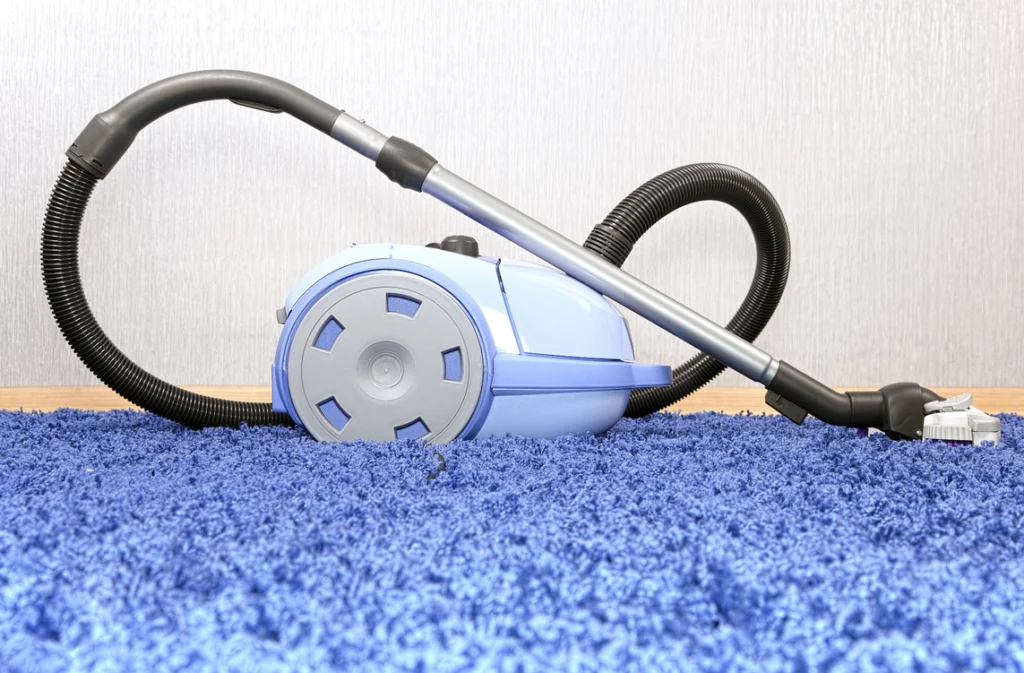
The household vacuum wasn’t just loud—it was seismic, producing vibrations that could be felt through the floor in adjacent rooms. These substantial cleaning machines featured metal bodies and cloth bags that filled dramatically as you worked, creating a visible record of your housekeeping efforts. The distinctive smell of warm dust that these machines produced became the official scent of Saturday morning cleaning rituals in homes across America.
Operating these mechanical beasts required genuine physical strength—pushing them across shag carpeting was a legitimate workout that left visible track marks as evidence of your cleaning patterns. Despite ingesting pennies, small toys, and occasionally, the corner of a prized Persian rug, these vacuums continued roaring through household duties without complaint. The sound of the motor struggling briefly before successfully consuming a larger object became a satisfying indication of the machine’s raw power, creating an odd sense of pride in its unstoppable cleaning capabilities.
12. The Dishwasher That Doubled as White Noise
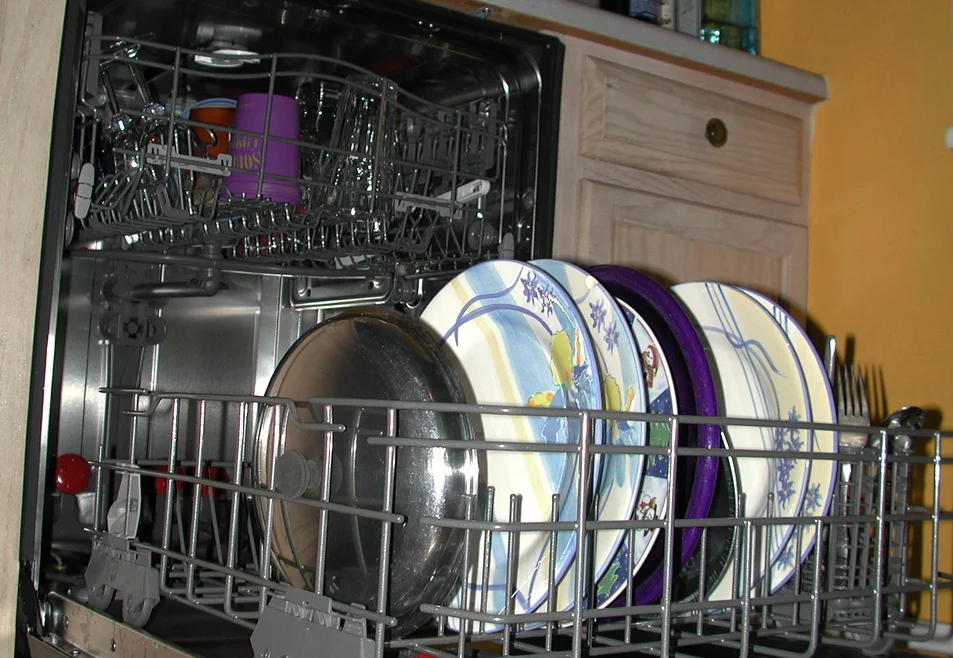
The kitchen dishwasher announced its operation with a start-up sequence that sounded like industrial machinery warming up for a factory shift. These substantial appliances ran for what seemed like hours, flooding the kitchen with white noise and occasional concerning thuds as water jets hit particularly resistant food remnants. Loading required strategic thinking and spatial reasoning—a valuable skill set that separated competent household managers from mere amateurs.
The control panel featured minimal options, usually a single dial that clicked through its settings with satisfying mechanical precision. Despite regularly consuming forks, receiving inappropriate detergents, and being packed far beyond recommended capacity, these cleaning tanks continued functioning through family meals and holiday gatherings alike. The distinctive “end of cycle” click became a household time marker, signaling the transition between dinner cleanup and evening relaxation even from several rooms away.
13. The Electric Carving Knife for Special Occasions
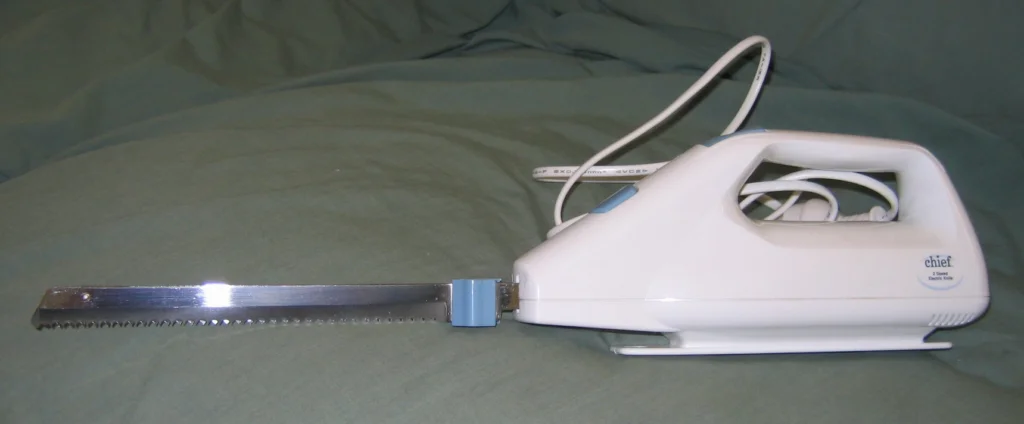
Stored in its original box and brought out primarily for Thanksgiving and Christmas, the electric carving knife was essentially two serrated blades powered by a handheld motor that vibrated with alarming intensity. When activated, it produced a sound similar to a small chainsaw, creating genuine concern among guests unfamiliar with this domestic power tool. The substantial weight required a steady hand and genuine concentration, transforming the simple act of carving meat into a public performance of skill and nerve.
The dual reciprocating blades moved with hypnotic rhythm, their stainless steel surfaces reflecting dining room lights as they performed their special-occasion duties. Despite being used only a few times yearly and stored in increasingly deteriorating cardboard packaging, these specialized tools emerged ready for service decade after decade. The distinctive electrical hum cutting through holiday dinner conversation became a family tradition in itself—a mechanical announcement that the feast was officially ready to be served.
The tools that populated our homes in the ’70s weren’t just objects—they were characters in our daily lives, announcing their presence and purpose with unapologetic volume and substantial physical presence. Unlike today’s sleek, quiet devices designed to blend seamlessly into our homes, these mechanical companions demanded attention and respect. They weren’t concerned with energy efficiency or noise reduction—their sole purpose was getting the job done, no matter how much noise or counter space that required. While modern appliances certainly offer convenience and technological advantages, they’ve lost something in personality and presence—the unmistakable mechanical soundtrack and physical heft that once defined our relationship with household tools.


